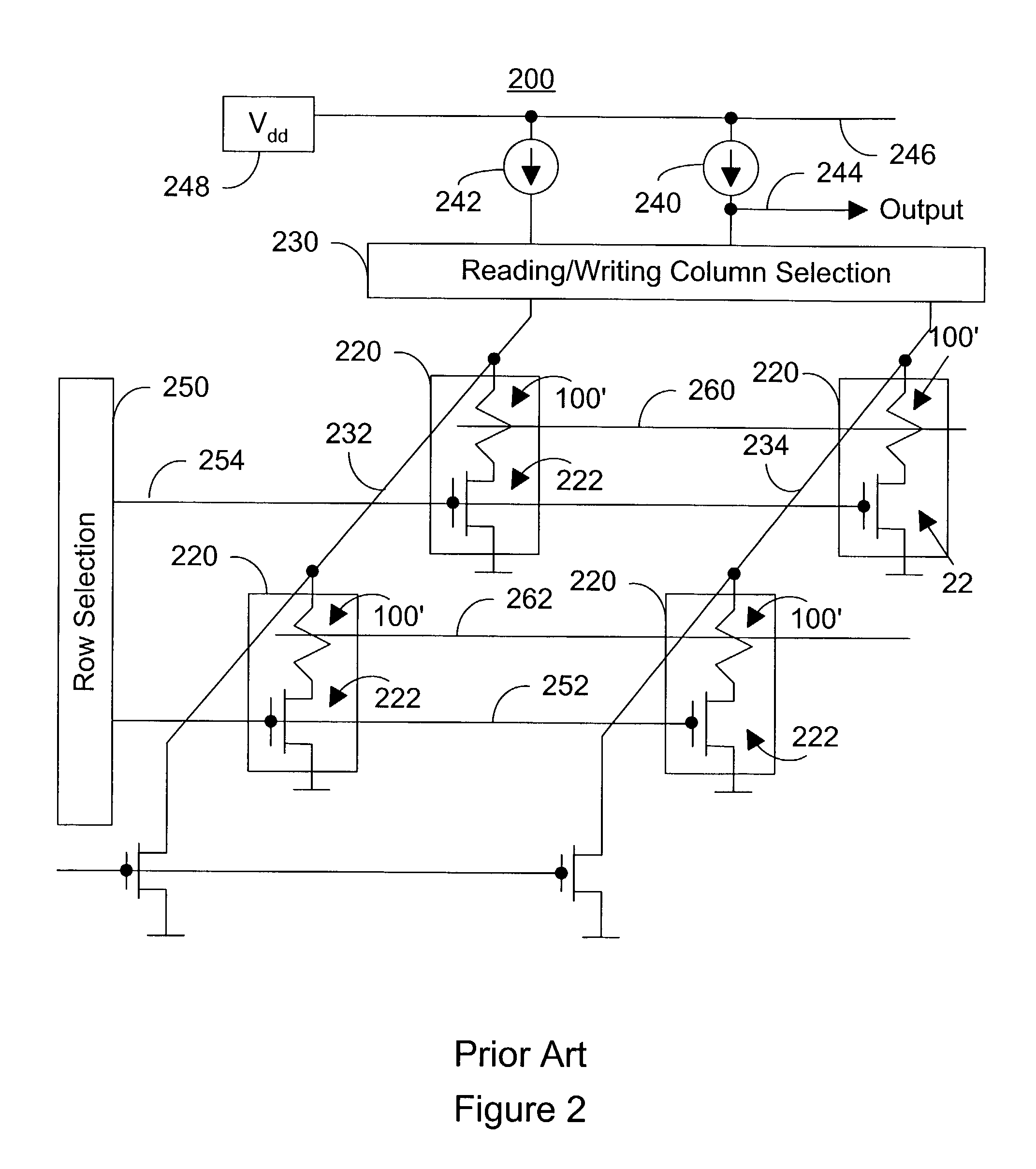Magnetic element utilizing spin-transfer and half-metals and an MRAM device using the magnetic element
a magnetic element and spin-transfer technology, applied in the field of magnetic memory systems, can solve the problems of increasing cross talk and power consumption, increasing physical area and complexity, and obstacles at higher memory cell densities, so as to reduce high switching current, low power consumption, and high density
- Summary
- Abstract
- Description
- Claims
- Application Information
AI Technical Summary
Benefits of technology
Problems solved by technology
Method used
Image
Examples
Embodiment Construction
[0051]The present invention provides a spin-transfer stack device that has a reduced switching current and that can be used in a memory array having high density. Further, a spin-transfer stack device of the present invention provides low power consumption, low cross talk, and has high reliability, while providing a useable read signal. To achieve these and other advantages, the present invention provides different types of spin-transfer stack devices that replace magnetic layers with layers of a half-metallic material and / or use a continuous or a discontinuous layer of a half-metallic material on the magnetic layers.
[0052]One exemplary embodiment of the present invention provides a single-spacer spin-transfer stack device that uses thin coating of a half-metallic material that is approximately 100 Å thick or less that is deposited on top of the pinned layer, thereby reducing the effects of the undesirable material characteristics and still keep the high polarization.
[0053]FIGS. 3A ...
PUM
 Login to View More
Login to View More Abstract
Description
Claims
Application Information
 Login to View More
Login to View More - R&D
- Intellectual Property
- Life Sciences
- Materials
- Tech Scout
- Unparalleled Data Quality
- Higher Quality Content
- 60% Fewer Hallucinations
Browse by: Latest US Patents, China's latest patents, Technical Efficacy Thesaurus, Application Domain, Technology Topic, Popular Technical Reports.
© 2025 PatSnap. All rights reserved.Legal|Privacy policy|Modern Slavery Act Transparency Statement|Sitemap|About US| Contact US: help@patsnap.com



